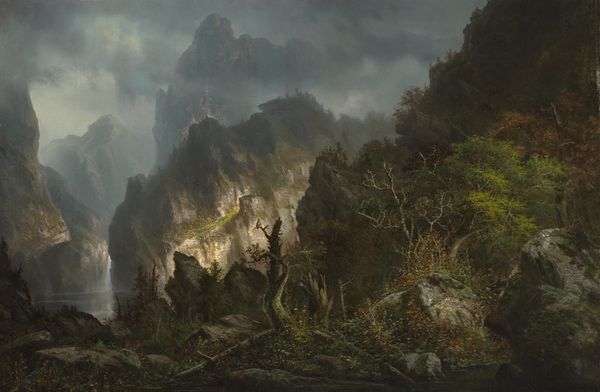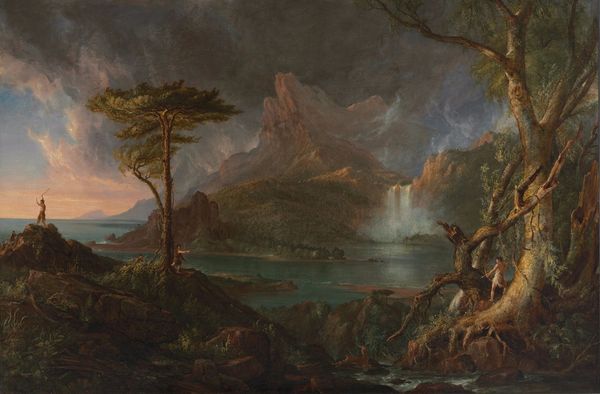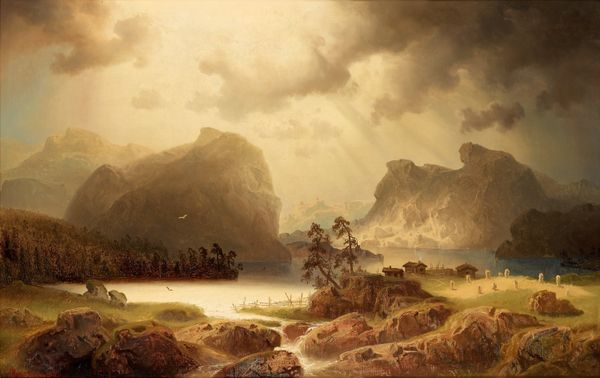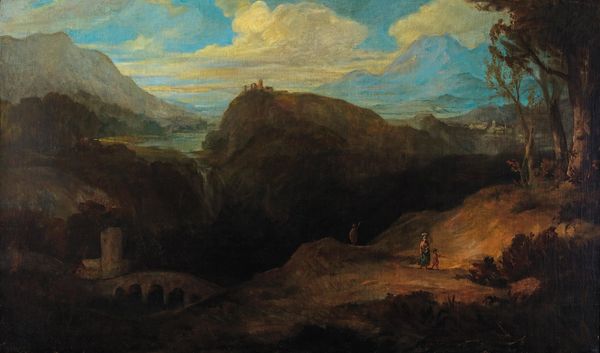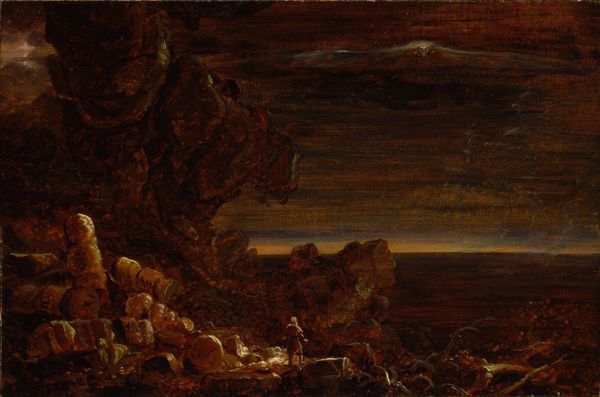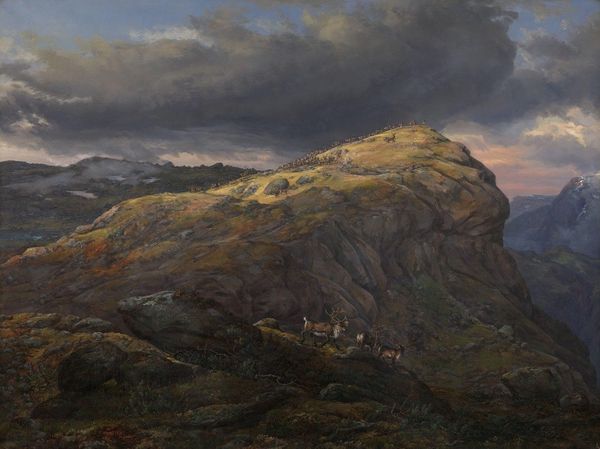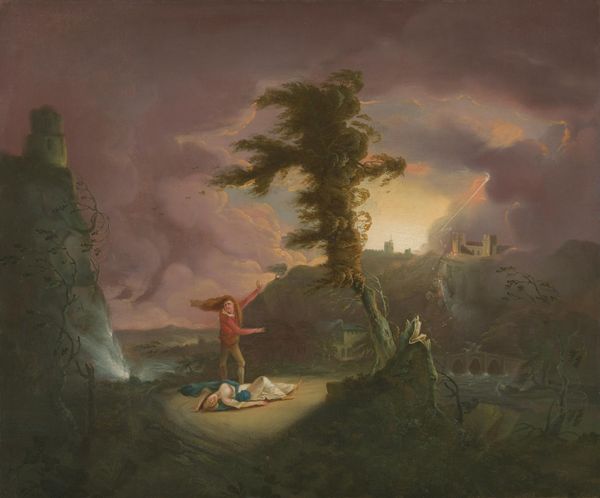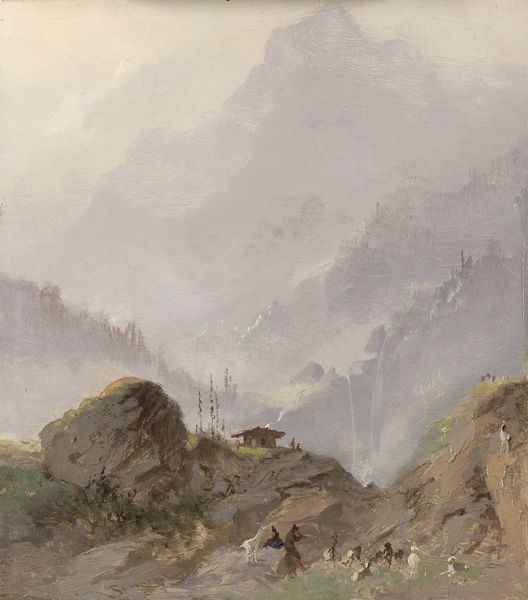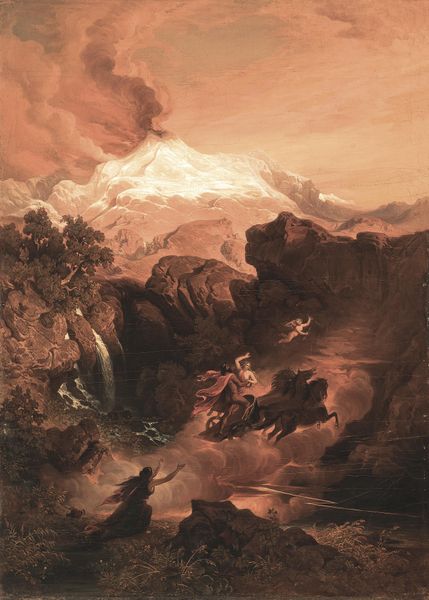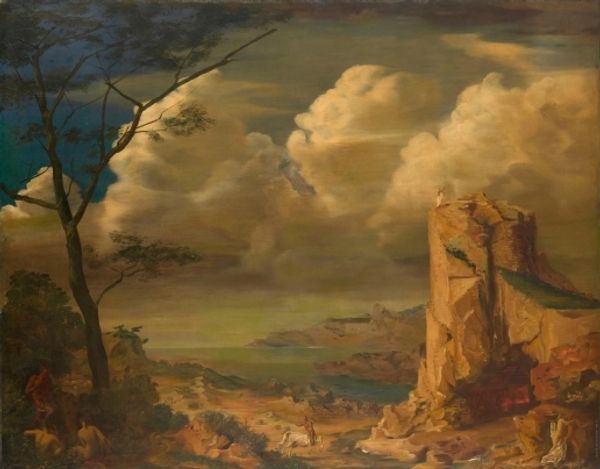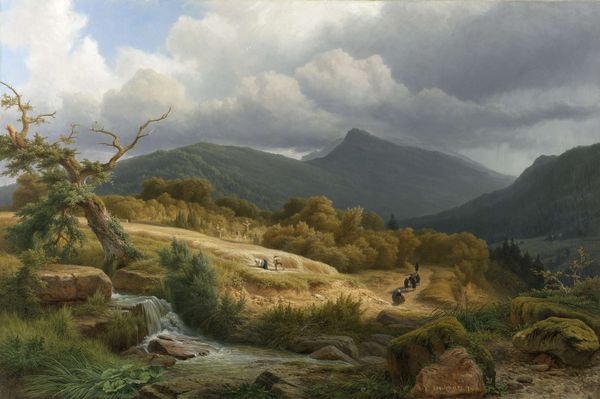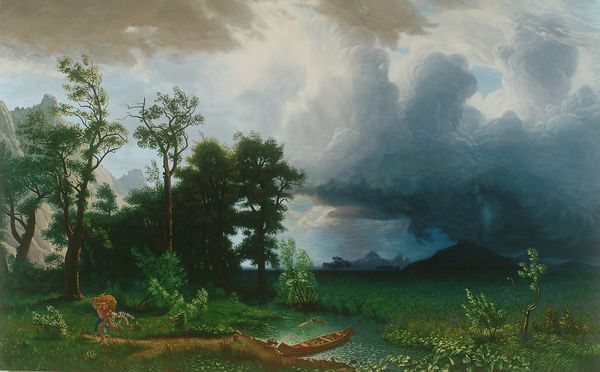
oil-paint
#
fantasy art
#
oil-paint
#
landscape
#
figuration
#
romanticism
#
hudson-river-school
#
history-painting
Copyright: Public Domain: Artvee
Editor: Here we have Thomas Cole's "Landscape with Figures; A Scene from ‘The Last of the Mohicans,’" an oil painting from 1826. It’s quite dramatic, almost theatrical, with that brooding sky and the figures positioned as if on a stage. What story do you think this landscape is telling? Curator: The painting's engagement with James Fenimore Cooper's popular novel is significant. Cole, and indeed the Hudson River School more broadly, found in Cooper's romanticized view of the American frontier a potent vehicle to express anxieties surrounding westward expansion and the treatment of Native American populations. Notice how the grandeur of the landscape dwarfs the figures. Editor: Yes, I see that now! It feels like a statement about the relationship between man and nature. The small figures almost seem to be intruding on something much larger than themselves. But why base it on the novel? Curator: Cooper's work resonated deeply with the public. By referencing “The Last of the Mohicans,” Cole taps into existing cultural dialogues about national identity, progress, and the fate of indigenous peoples. The painting thus becomes more than just a landscape; it is a commentary on the historical moment and the complex narratives shaping America’s self-image. What's striking is how it frames that image, selling Romantic ideals of freedom, adventure, while visually depicting the violence of expansion and social inequity. How did audiences respond? Editor: That is fascinating! It almost feels like Cole is using the popular narrative to subtly critique those ideas. So it's not just pretty scenery but actively engages in cultural debates? Curator: Precisely. The choice of subject matter, linked to the powerful effect the visual landscape has, underscores art's active role in reflecting and shaping socio-political attitudes of its time. We cannot understand Cole, or art in general, separate from its social framework. It always actively participates, as does our response to it. Editor: I never thought about landscape painting having that level of social engagement before! Thank you; it adds a whole new dimension to how I see this painting.
Comments
No comments
Be the first to comment and join the conversation on the ultimate creative platform.
